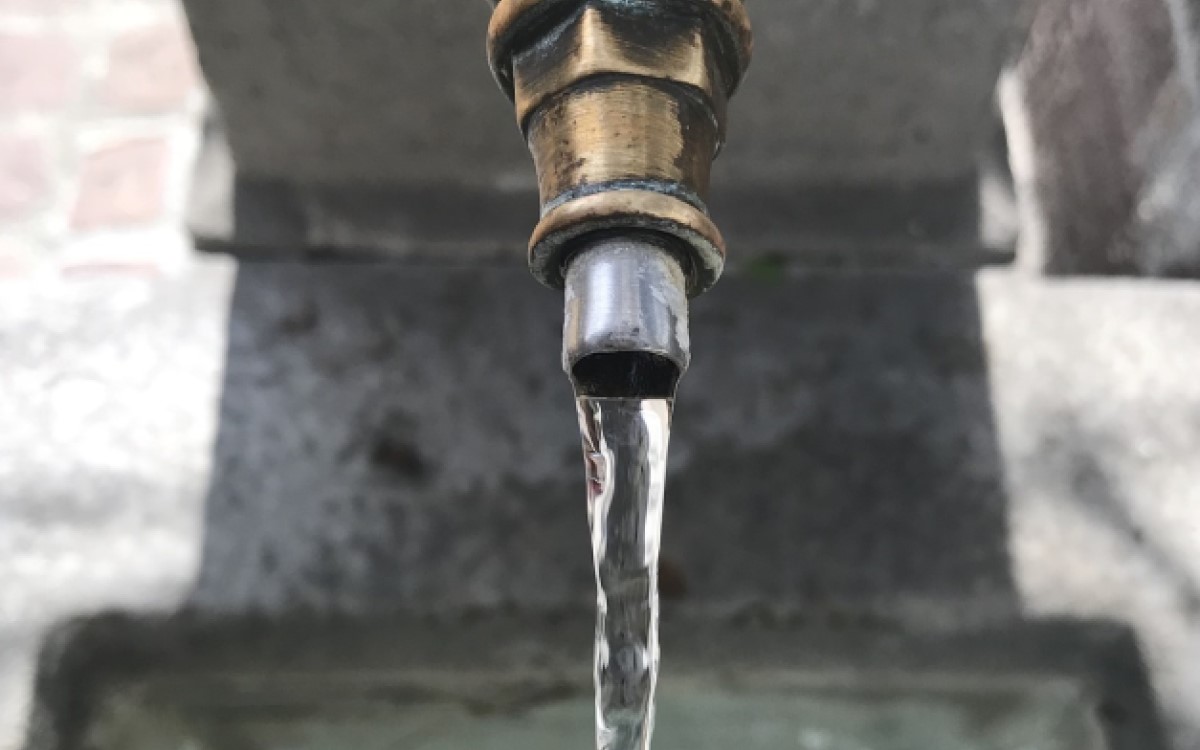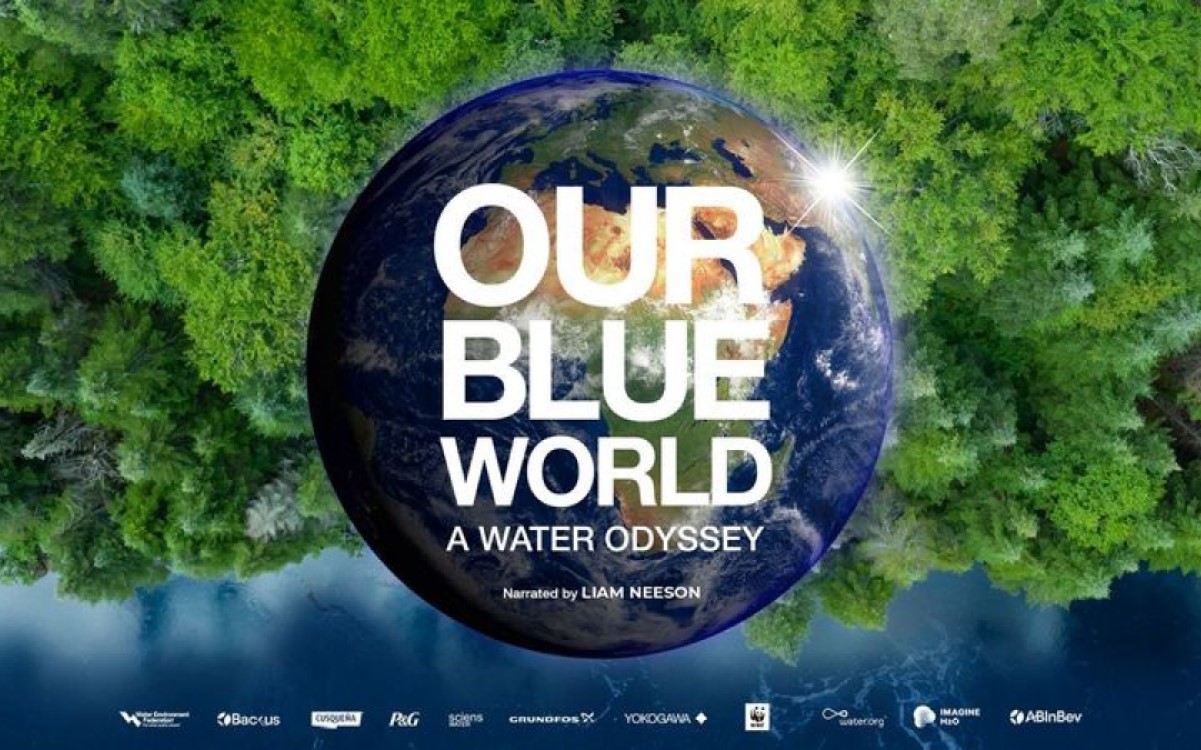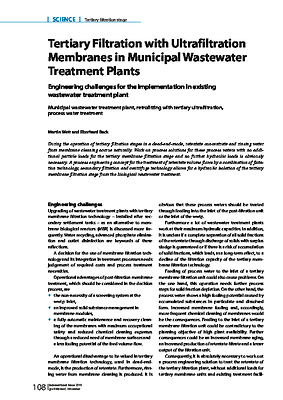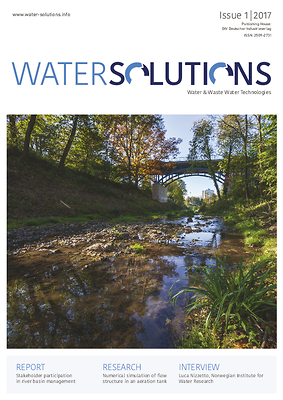25. September 2023 ǀ Drinking water sources increasingly contain organic micropollutants (OMVs). To remove them, water companies use various treatment methods.
Thanks to new models, included in the online tool AquaPriori, it is now easier to predict which treatment method will yield the most removal for certain OMVs and it will cost less money and time to determine the best treatment method through experiments.
Predictive models for effective treatment of organic micropollutants in drinking water
The models are based on Quantitative Structure Property Relationships that establish a relationship between the molecular structure of the contaminants and the treatment processes. For treatment with advanced oxidation and membrane technology, these models now have an accuracy of more than 80%. For treatment with activated carbon, the models must be better incorporated into the effects of the natural organic material present. Because organic micropollutants (OMVs) are increasingly found in drinking water sources, additional purification methods are often required, such as membrane filtration, adsorption on activated carbon or (advanced) oxidation processes. But how do you know which of the available methods works best for a newly discovered micropollutant? Testing all methods for each (new) micropollution is expensive and time-consuming. That is why models have been developed within the collective research for the drinking water companies BTO that can predict which treatment method is likely to be the most effective.
Utilizing quantitative structure property relationships in predictive models for water treatment
Models were therefore trained with data from ten years of pilot experiments at KWR and from the literature. Information on the removal of 100 to 500 compounds was used for each treatment method. Quantitative Structure Property Relationships (QSPRs) have been drawn up for these compounds to find a statistical relationship between reaction parameters (such as the quantum yield and various reaction constants) and their molecular structure. The specific parameters of a compound were used in models of the processes of the different treatment methods to predict how well the removal of this specific compound would proceed when using advanced oxidation, membrane filtration and treatment with activated carbon.
Validation and accuracy of predictive models for organic micropollutant treatment
To validate the models, a representative selection of OMVs was made based on a mathematical selection method. This resulted in a set of 30 OMVs that were used in pilot installations of all three treatment methods. For the oxidative methods, the process models were combined with QSPRs for specific kinetic parameters such as the reaction rate constants for O3 and OH radicals and quantum yield. This resulted in models that can predict the oxidation and/or photolysis of OMVs during UV treatment, ozonation, treatment with ozone O3 and hydrogen peroxide H2O2, treatment with UV and hydrogen peroxide and treatment with UV and ozone. When comparing with the measured values for the set of 30 OMVs, the models turned out to be more than 80% accurate.
Models were also developed to predict the removal of OMVs with membrane techniques, namely with spiral-wound nanofiltration membranes (NF) and reverse osmosis (RO) membranes and with capillary NF membranes. The permeability of the membranes to the OMVs was predicted using QSPRs. Here too, an accuracy of more than 80% was achieved.

The removal of organic micropollutants during drinking water preparation with reverse osmosis (RO). In orange the predicted removal, in green the measured removal. Blue is the average removal with other types of membranes.
Predicting organic micropollutant breakthrough and the role of natural organic materials in activated carbon treatment
Finally, a model has been developed to predict when OMVs ‘break through’ (i.e. are no longer removed by the carbon) during treatment with activated carbon. In pure water, which does not contain natural organic materials or NOM, this breakthrough can be accurately predicted. But water usually contains NOM, and then this must be included in the process of activated carbon treatment because NOM competes with OMVs in the adsorption or the pores in the activated carbon, where adsorption of OMVs takes place. A better model is currently being developed in which the effects of different fractions of natural organic materials on the adsorption to activated carbon of different OMVs are correctly incorporated. With the above-mentioned models, an efficient method has been developed to predict which type of treatment method is best. can act on a new organic micropollution. These models are included in the online tool AquaPriori that allows water companies and laboratories to quickly estimate the removal of organic micropollutants. Experimental research is then of course needed to verify these predictions, but because the models provide substantiated direction to the research, such experiments will cost less time and money.








